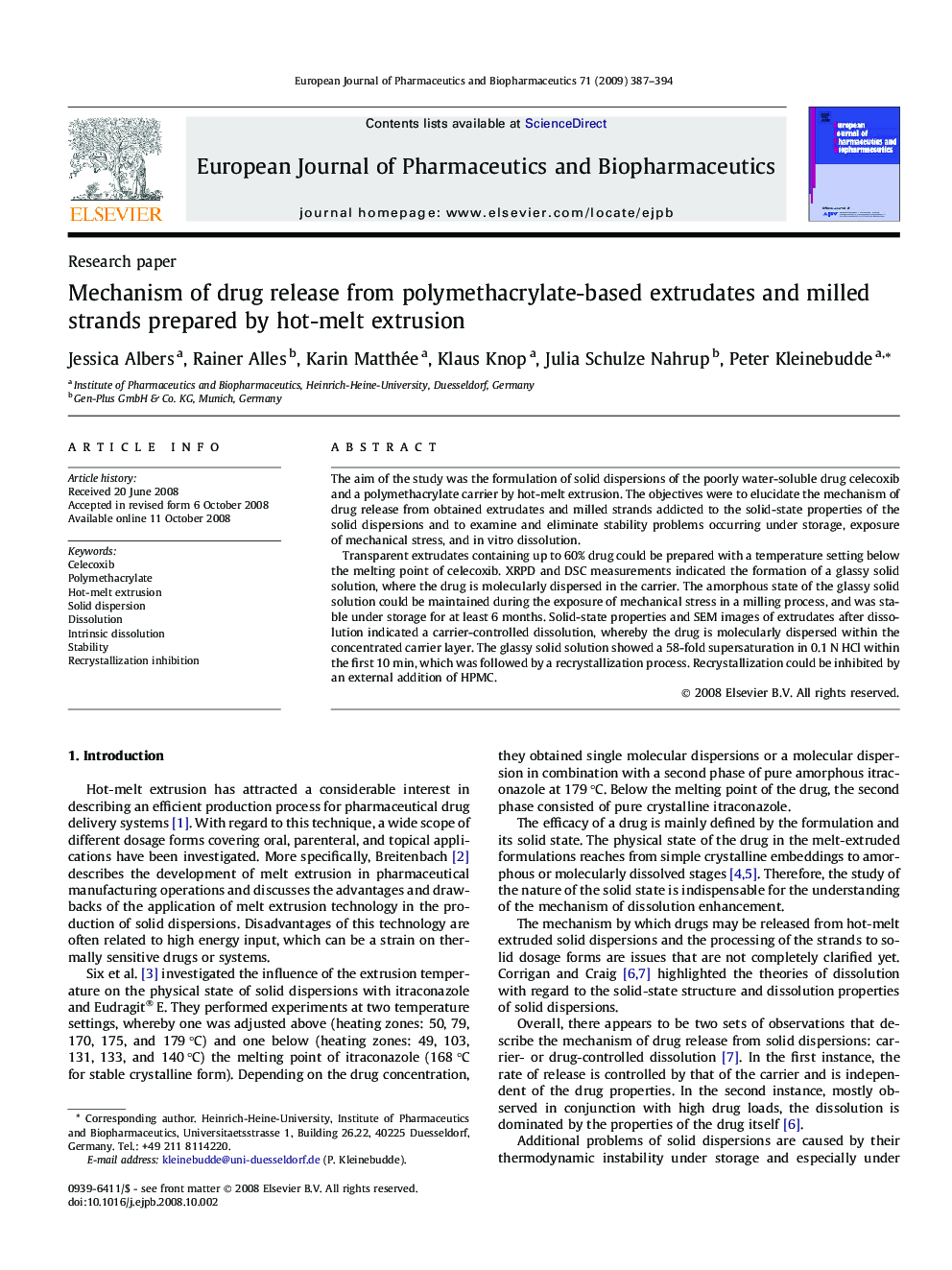| Article ID | Journal | Published Year | Pages | File Type |
|---|---|---|---|---|
| 2085644 | European Journal of Pharmaceutics and Biopharmaceutics | 2009 | 8 Pages |
The aim of the study was the formulation of solid dispersions of the poorly water-soluble drug celecoxib and a polymethacrylate carrier by hot-melt extrusion. The objectives were to elucidate the mechanism of drug release from obtained extrudates and milled strands addicted to the solid-state properties of the solid dispersions and to examine and eliminate stability problems occurring under storage, exposure of mechanical stress, and in vitro dissolution.Transparent extrudates containing up to 60% drug could be prepared with a temperature setting below the melting point of celecoxib. XRPD and DSC measurements indicated the formation of a glassy solid solution, where the drug is molecularly dispersed in the carrier. The amorphous state of the glassy solid solution could be maintained during the exposure of mechanical stress in a milling process, and was stable under storage for at least 6 months. Solid-state properties and SEM images of extrudates after dissolution indicated a carrier-controlled dissolution, whereby the drug is molecularly dispersed within the concentrated carrier layer. The glassy solid solution showed a 58-fold supersaturation in 0.1 N HCl within the first 10 min, which was followed by a recrystallization process. Recrystallization could be inhibited by an external addition of HPMC.
